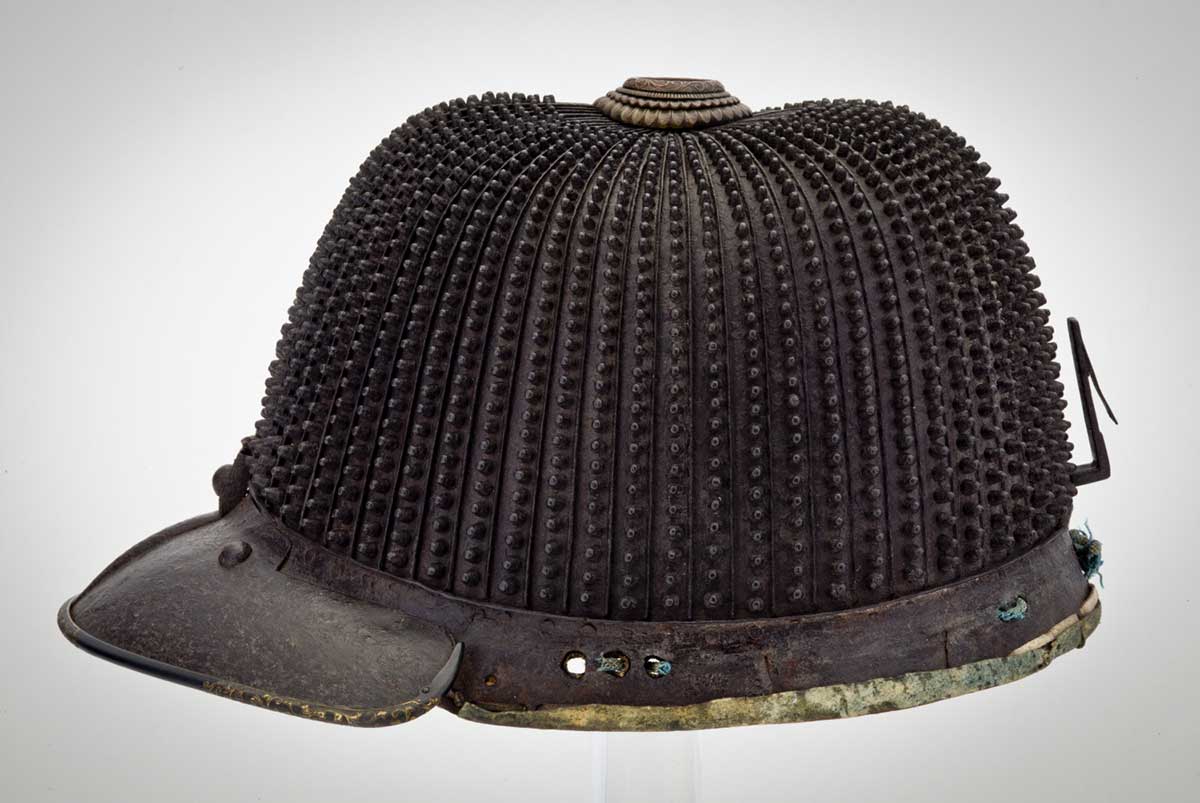Art of the Samurai: Japanese Arms and Armor
Through February 28, 2024

Japanese, 64-plate Hoshi Kabuto (rivet helmet), 1500s, iron, lacquer, copper alloy, gilded shakudo, leather, silk and fabric. The John Woodman Higgins Armory Collection, 2014.720
Samurai, members of Japan's warrior class, ruled the country for nearly a millennium, from the 12th through the 19thcentury, and continue to be revered as symbols of bravery, loyalty, and honor. While they initially rose to power due to their military prowess, they maintained their elevated positions through political, financial, and cultural acumen. They were expected to hold administrative positions within their military government. In addition, and in contrast to the brutality of their profession, they also became highly-cultivated individuals, practicing and supporting the arts, such as calligraphy and painting. The elaborate arms and armor of the samurai thus speak to their duties as both warriors and statesmen; these materials could withstand the rigors of warfare, but were also aesthetic objects appropriate for ceremonial purposes and public display. During the peaceful Edo period (1615-1868), samurai arms and armor evolved from functional military gear to coveted symbols of wealth, status, and power.
The objects on display here demonstrate not only the delicate balance between, and paradoxical relationship of, bu and bun—the arts of war and of culture—that characterized Japan's great warriors, but also the evolving position of samurai arms and armor in Japanese society, culture, and craftsmanship.
